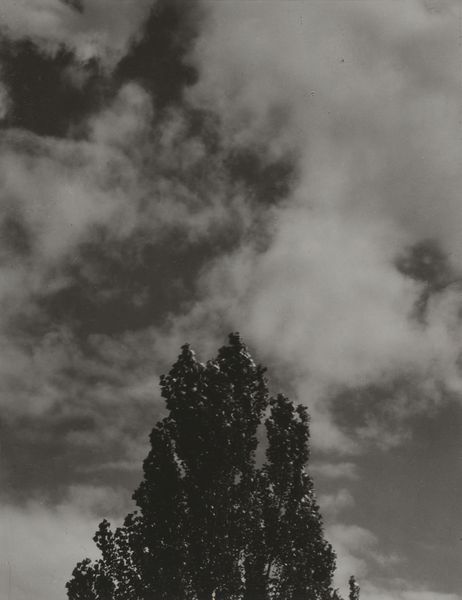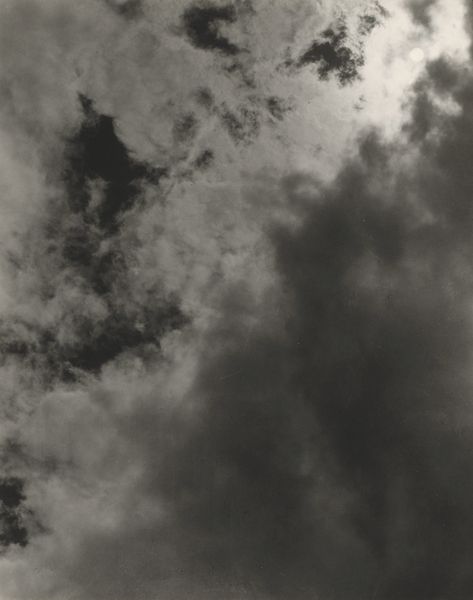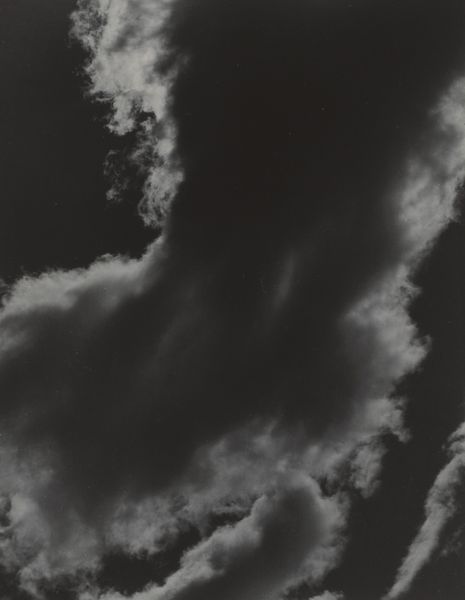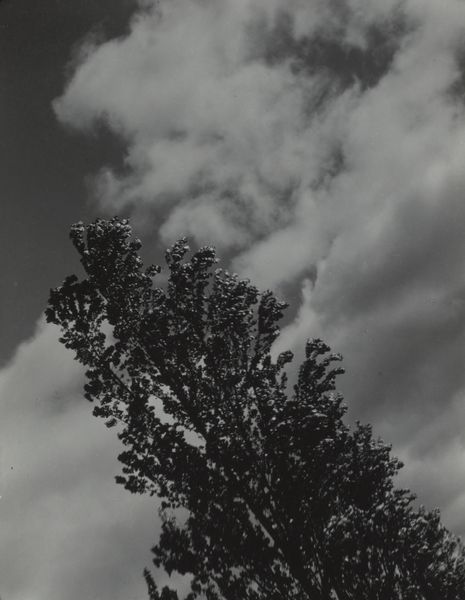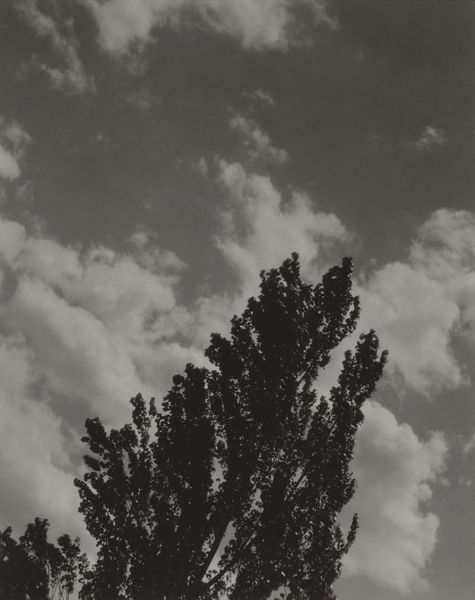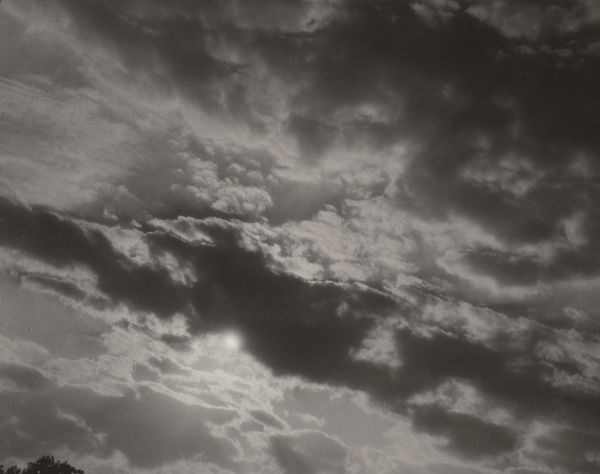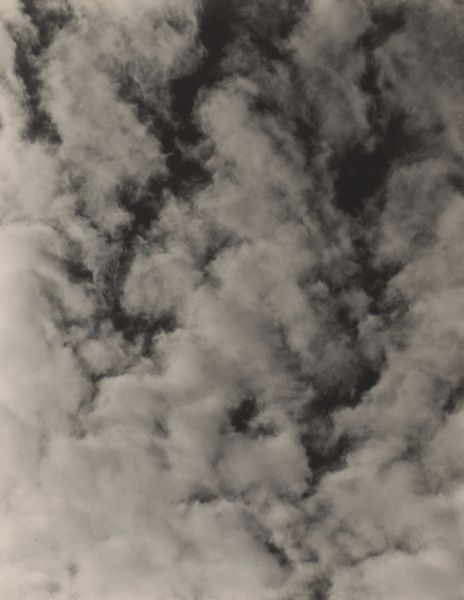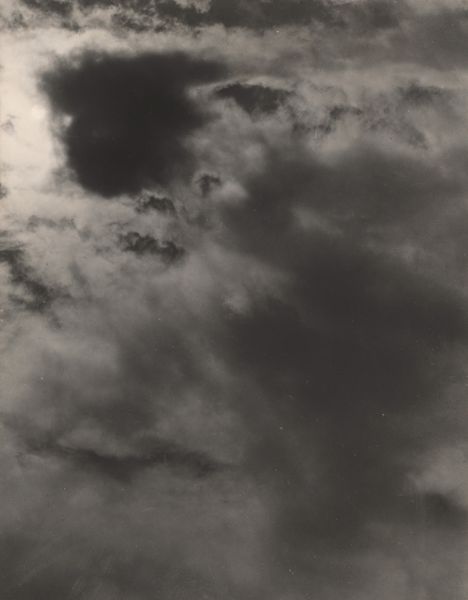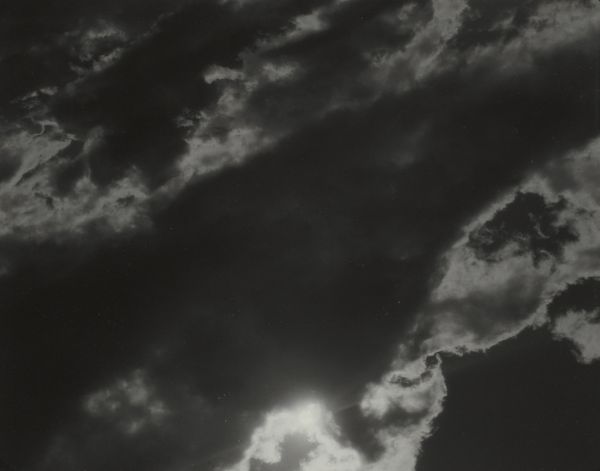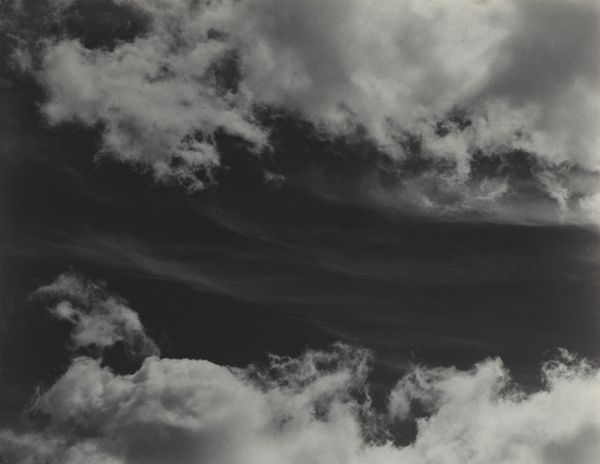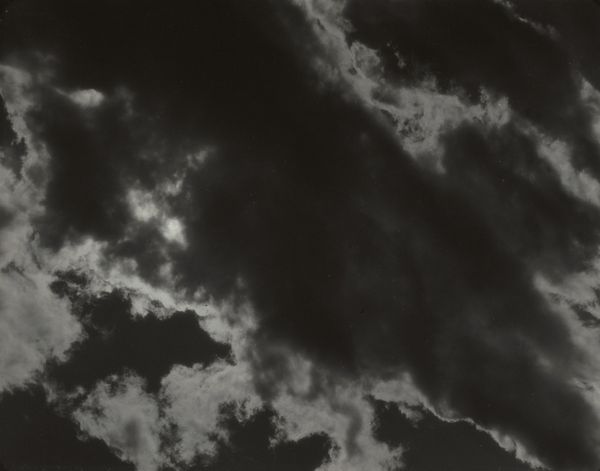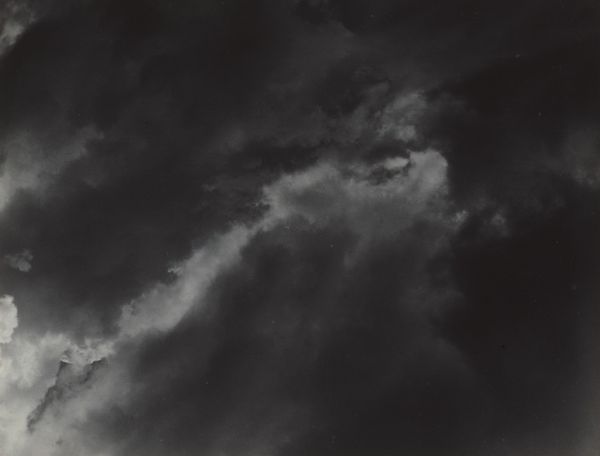
photography, gelatin-silver-print
#
black and white photography
#
pictorialism
#
landscape
#
photography
#
gelatin-silver-print
#
monochrome photography
#
abstraction
#
monochrome
#
modernism
#
monochrome
Dimensions: image: 11.5 x 9 cm (4 1/2 x 3 9/16 in.) sheet: 12.7 x 10.1 cm (5 x 4 in.) mount: 34 x 27.5 cm (13 3/8 x 10 13/16 in.)
Copyright: National Gallery of Art: CC0 1.0
Curator: This is Alfred Stieglitz’s "Portrait—K.N.R., No. 1 or Songs of the Sky C1," a gelatin silver print from 1923. It's part of his "Songs of the Sky" series. Editor: Immediately, there’s this sense of raw energy, isn't there? The contrast is stark. You’ve got the dark, almost skeletal tree reaching towards the sky, and the sky itself feels turbulent. Like a storm’s either brewing or just passed. It feels loaded with metaphorical possibility. Curator: Absolutely. Stieglitz positioned these cloud photographs, which he termed "equivalents," as explorations of his inner state, not necessarily representations of actual atmospheric conditions. He was deeply influenced by modernist ideas about abstraction and the power of art to communicate pure emotion. Editor: So, it's less about a literal depiction of clouds, more about Stieglitz’s response to the world and to his creative circle, perhaps? Looking at the historical context, this was made in a period marked by immense change. The aftershocks of World War I, shifts in societal norms, all would have affected artists profoundly. The push to express interiority is then almost a survival strategy, wouldn't you say? Curator: I agree. Moreover, it reflects Stieglitz’s agenda to assert photography’s place among the fine arts. Pictorialism, with its emphasis on composition, tonality, and the photographer’s hand, was waning, but Stieglitz’s focus on the artistic potential of straight photography, combined with abstraction, allowed him to stake his claim. Editor: What strikes me is how prescient it feels. In an era of unprecedented technological advancement and information overload, images like this ask us to slow down, to really look, to consider what a photograph *means* beyond just what it depicts. Curator: Indeed. It challenges our notions of portraiture as well. Stieglitz wasn’t concerned with capturing physical likeness, but the essence of a person or emotional state. These cloudscapes become stand-ins. Editor: Seeing this work, I can't help but to feel its continued resonance today. In the face of socio-political and ecological turmoil, artists continue to embrace abstraction as a vital form of resistance, inviting viewers to engage in new kinds of political expression, of feeling, and critical analysis. Curator: Exactly. This piece invites you to slow down and contemplate what resonates within. That's an invaluable takeaway. Editor: An image both of and beyond its time. A real study of the artist’s intention.
Comments
No comments
Be the first to comment and join the conversation on the ultimate creative platform.
